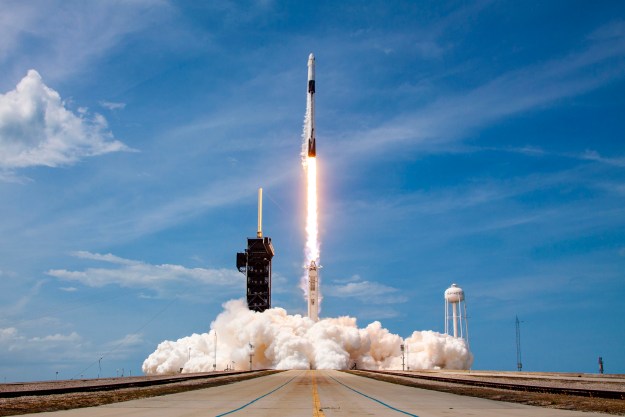Installed on the space station’s Tranquility node, the inflatable pod could one day provide extra living and work space for astronauts on missions into deep space.
NASA astronaut Jeff Williams opened the hatch to the ISS’s brand new room early Monday. But banish from your mind any thoughts of home comforts and appealing decor – the BEAM habitation system is a test module to see how its design and technology functions in space.
Williams entered the module with Russian cosmonaut Oleg Skripochka to collect an air sample and start downloading data from sensors on the dynamics of BEAM’s expansion, NASA said.
Broadcast live on NASA TV, the American astronaut told Mission Control in Houston that the living pod looked “pristine,” adding that it felt cold inside. And following its problematic inflation last week, Williams was happy to report that there was no evidence of any condensation on BEAM’s inner surfaces or any other visible issues.
BEAM’s technology could one day be used to build larger rooms for missions into deep space. Its light weight and compact transportation size – it expanded to 4 meters (13 feet) long and 3.2 meters (10.5 feet) in diameter, about five times its original size – makes it an attractive system for private space companies interested in making manned trips to faraway places such as Mars, something SpaceX CEO Elon Musk believes could happen within 10 years.
The inflatable pod is made with several layers of tough fabric, including a bullet-resistant polymer called Vectran, which its engineers say should be able to withstand hazards such as space debris, extreme temperatures, and radiation. Tests and data gathered from the module over the next two years will give its designers precise information on its durability and effectiveness in a space environment, allowing them to make any necessary changes to improve its design.
Las Vegas-based Bigelow Aerospace developed and built the module with some investment coming from NASA’s Advanced Exploration Systems Division.
The plan is to build larger versions of the BEAM module. Bigelow recently announced a collaboration with United Launch Alliance (ULA) to develop a much bigger pod that could launch aboard a ULA Atlas V rocket in 2020. This particular design is expected to be around 30 percent of the ISS’s volume, and is likely to include technology that could one day allow it to operate as a self-sufficient orbiting outpost.
Editors' Recommendations
- Space station’s new robotic arm springs to life
- How to watch SpaceX Crew-4 astronauts launch to ISS
- NASA’s private Ax-1 crew gets some extra time in space
- How to watch NASA’s first space tourism launch to the ISS today
- NASA’s first space tourism mission to ISS delayed


